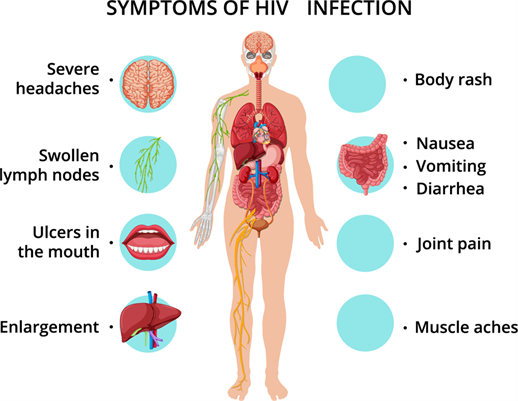
PUMPA - SMART LEARNING
எங்கள் ஆசிரியர்களுடன் 1-ஆன்-1 ஆலோசனை நேரத்தைப் பெறுங்கள். டாப்பர் ஆவதற்கு நாங்கள் பயிற்சி அளிப்போம்
Book Free DemoIn the previous theory, we saw AIDS and the transmission of HIV. In this theory, we shall see symptoms, treatment, prevention and control of AIDS.
Symptoms and treatment of AIDS:
Symptoms:
Individuals who have been infected develop immunodeficiency—a person's susceptibility to viral, bacterial, protozoan, and fungal infections increases. Lymph node swelling, brain damage, memory loss, lack of appetite and weight loss, fever, persistent diarrhoea, cough, tiredness, pharyngitis, nausea, and headache are all symptoms of Lymphoma.

Symptoms of HIV infection
Diagnosis:
Western Blot analysis or an Enzyme-Linked Immunosorbent Assay can be used to confirm the presence of the HIV virus (ELISA).
Treatment:
Antiretroviral medicines and immunostimulative therapy can help an infected individual live longer.
Prevention and control of AIDS:
The steps listed below may aid in the control and prevention of HIV infection:
- The blood obtained from blood banks must be subjected to screening for HIV before transfusion.
- Hospitals and clinics must practice the use of disposable syringes and needles.
- Promoting the use of condoms and advocating for safe sex.
- Organizing a public awareness campaign and educating people about the effects of AIDS.
- HIV/AIDS patients should not be isolated from their families or society.

Prevention and control measures of AIDS
Important!
Vaccination trials are being conducted all over the world to prevent AIDS. The RV 144 vaccine trial, which shows 30 reduced HIV risks, is the most remarkable. This trial took place in Thailand in 2003, and the results were reported in 2011.
